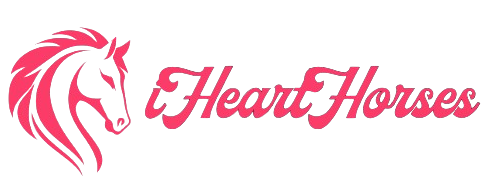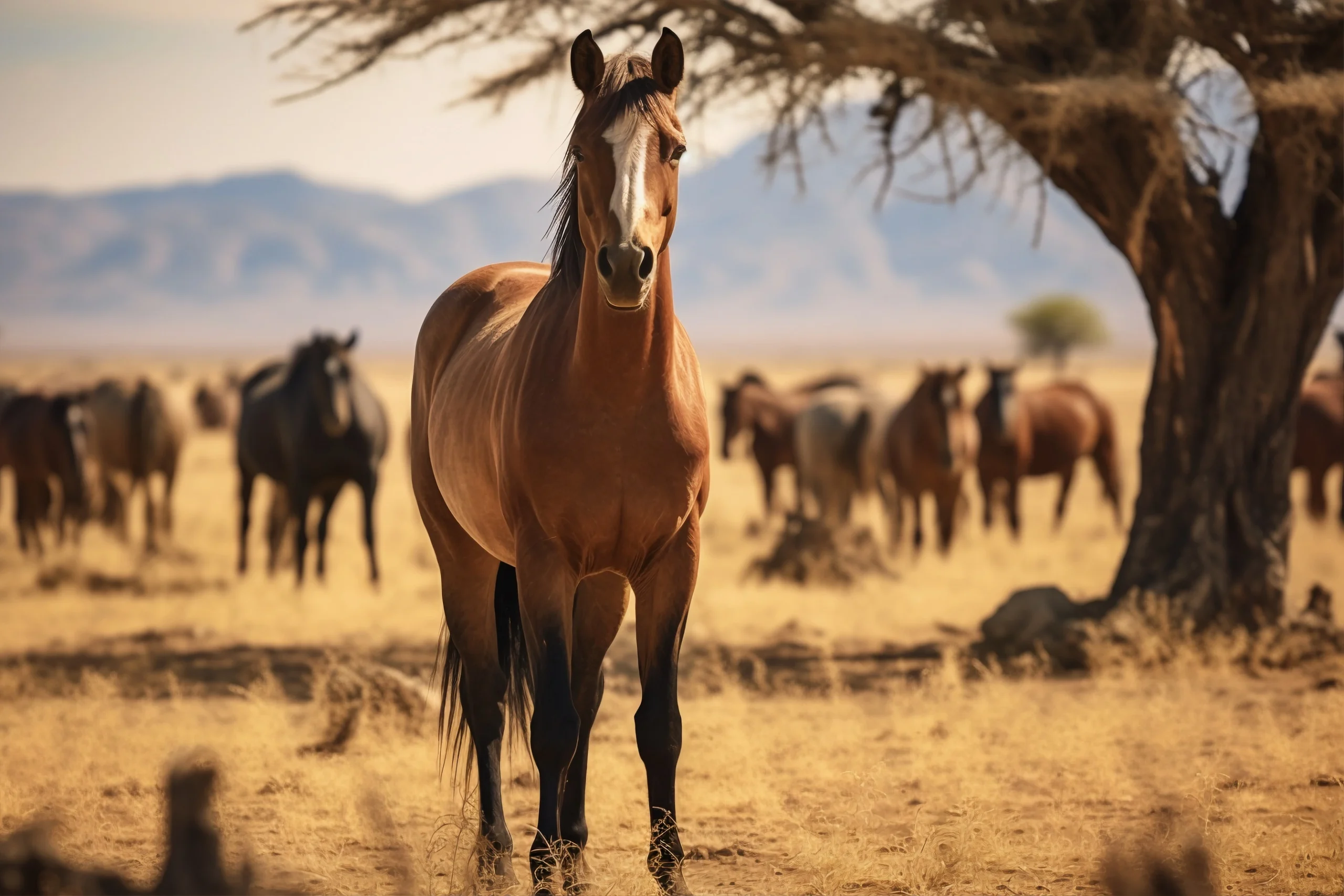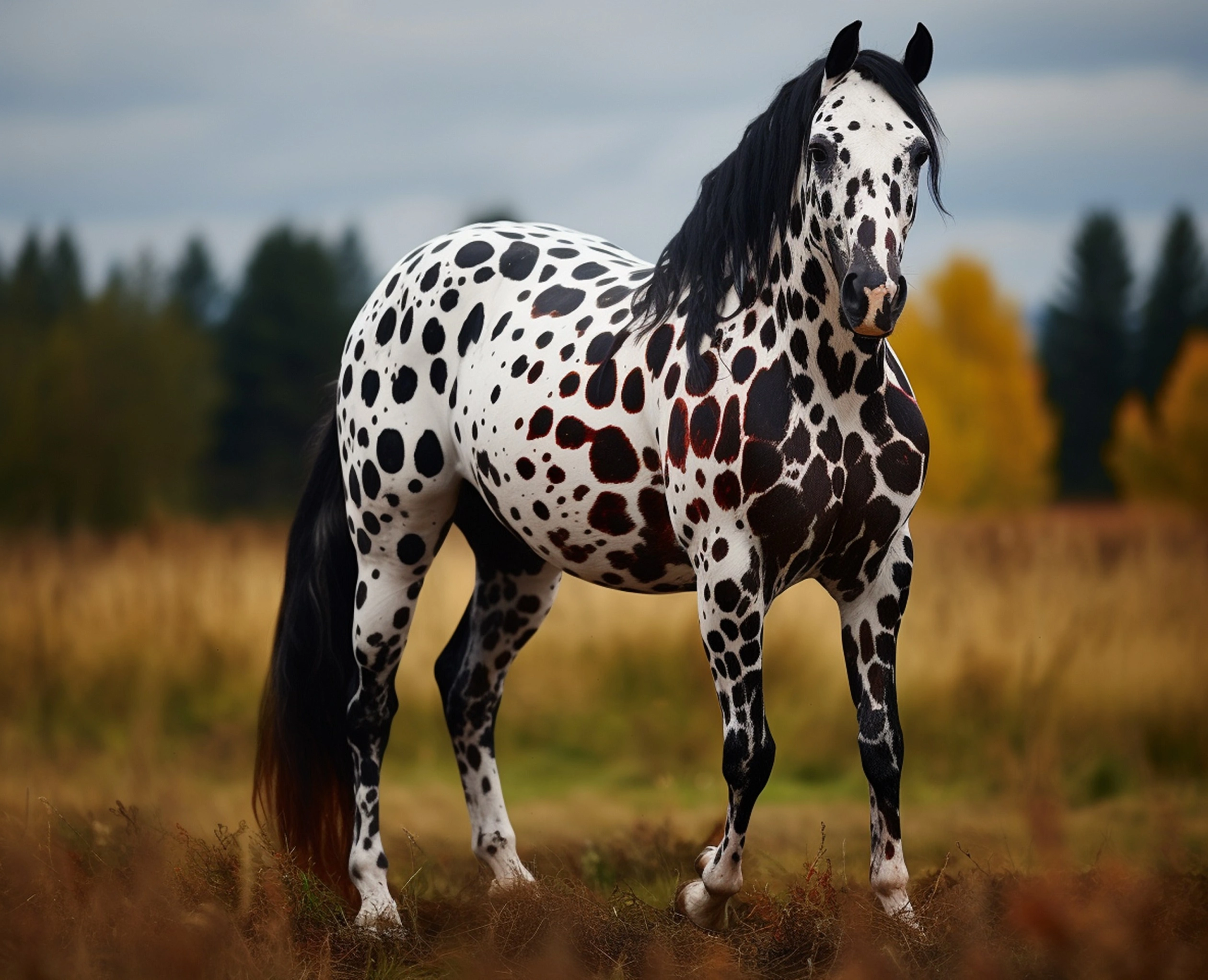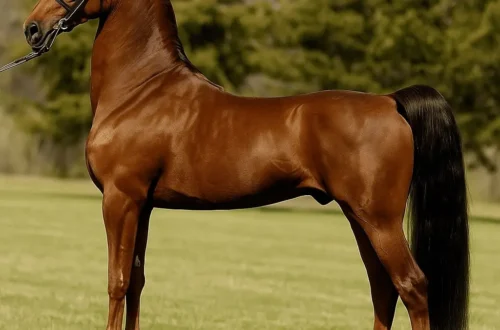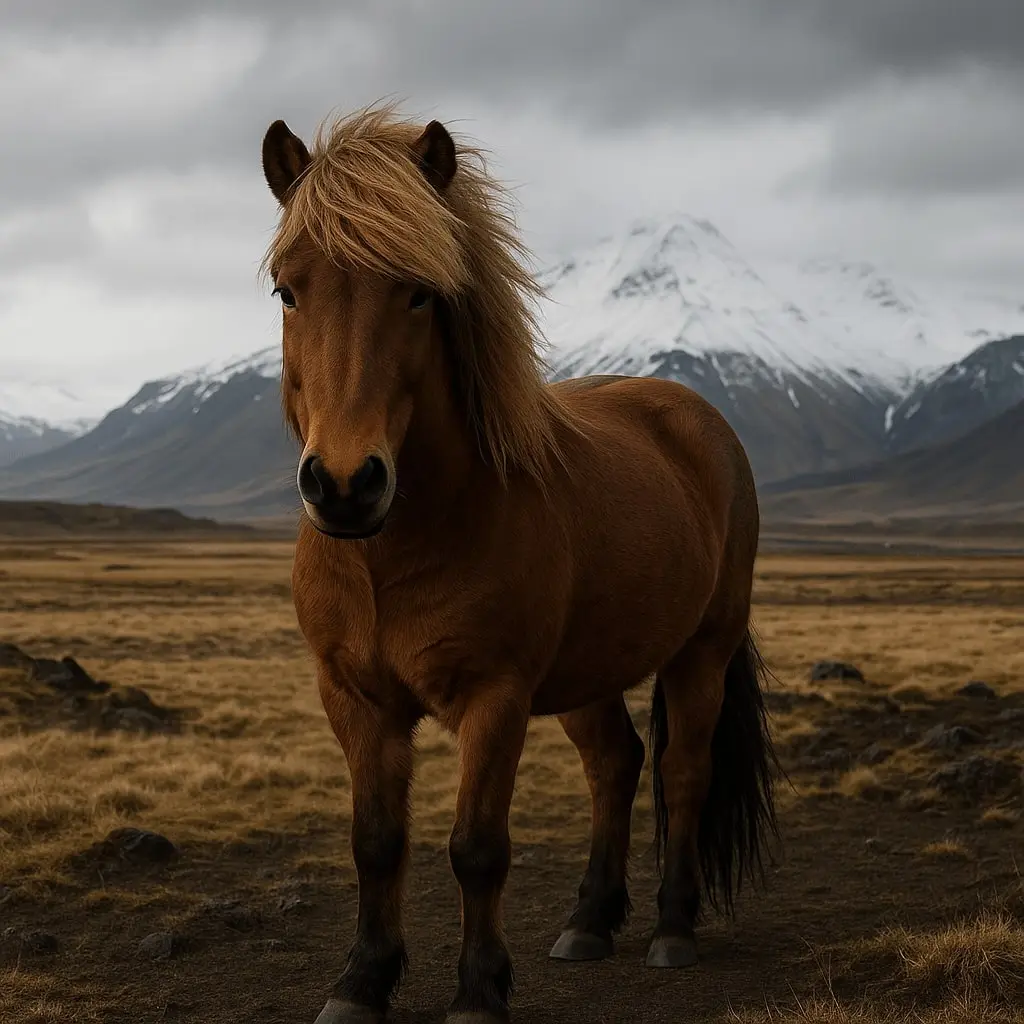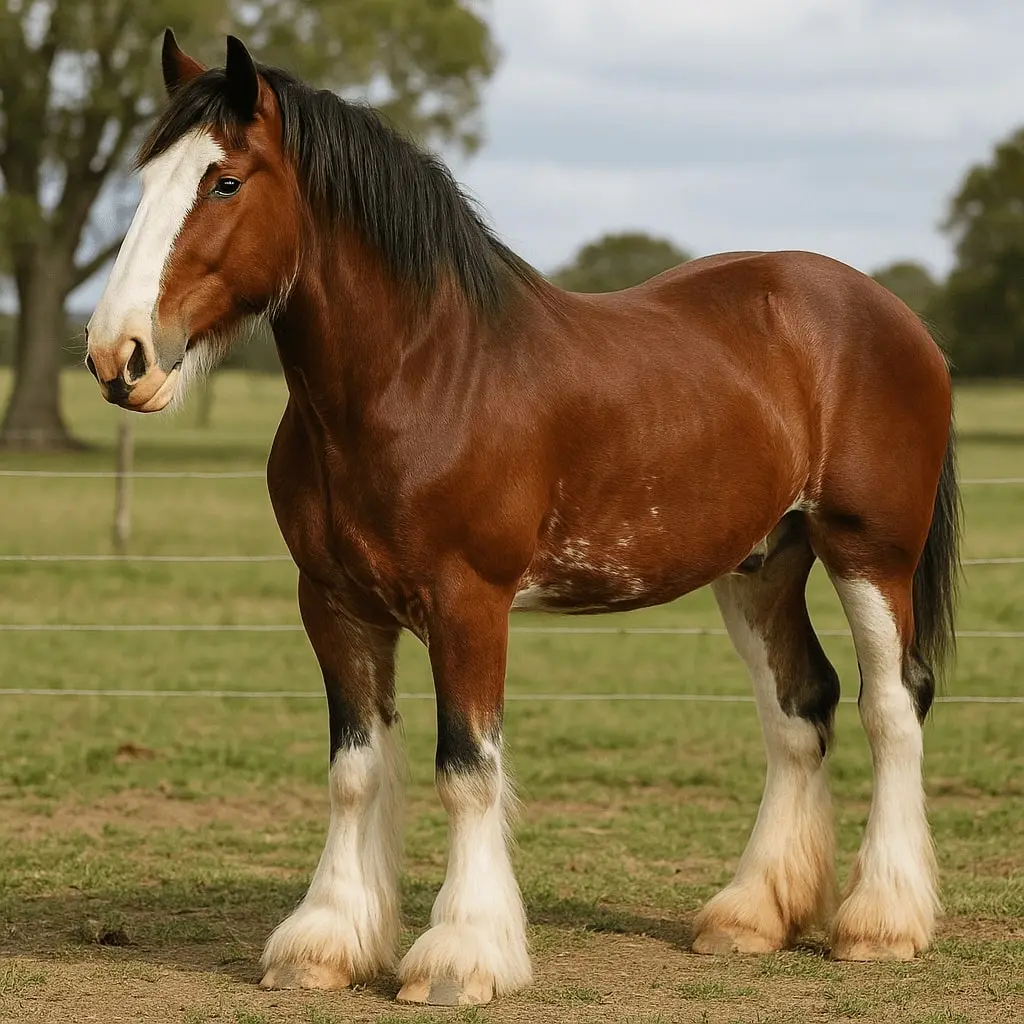Quarter Horses are amazing American horses that many people love. They are very fast, friendly, and versatile. They were even named for being super quick at running a quarter-mile race. In fact, the American Quarter Horse is one of the oldest horse breeds in the United States. Colonial settlers in the 1600s mixed Spanish horses with English horses to create what would become the Quarter Horse. They raced these horses over short tracks, and the fastest sprinter won. That made the breed famous and gave it the name “Quarter Horse.”
These fun facts about Quarter Horses will help you learn why this breed is so special. For example, Quarter Horses have excellent “cow sense”, meaning they instinctively know how to move cattle. They also have a calm, gentle nature, which makes them safe for riders of all ages. In fact, the Quarter Horse is the most popular breed of horse in the United States, and the Quarter Horse Association has registered over six million horses worldwide. We will share many fun facts about Quarter Horses in clear, short sections below. Whether you’re a curious kid or a fan of horses, these fun facts about Quarter Horses will surprise and delight you!
Getting to Know the American Quarter Horse – The History
The American Quarter Horse has a long, interesting history. It all began in colonial America in the 1600s. Settlers brought horses from Europe and bred them with local stock. The result was a small, stocky horse with short legs and a powerful build. By the late 1600s, people in places like Virginia and Rhode Island were racing these horses over a quarter-mile track. Quarter Horses often won these short sprints, faster than any other breed of horse. That is why the breed got its name – because it could run a quarter mile faster than others. The Encyclopaedia Britannica even notes that the Quarter Horse came from this early racing tradition.
As time went on, Quarter Horses were crossed with many breeds. In the 1800s, ranchers began mixing colonial Quarter Horses with wild mustangs, Spanish horses, and even Thoroughbreds. This added to their speed and stamina. Cowboys especially liked these horses. They found that Quarter Horses had a special talent for cattle – known as cow sense. A horse with cow sense seems to know how to cut off a cow’s path or read its moves almost by itself. This made Quarter Horses perfect for ranch work and rodeo events. Britannica explains that Quarter Horses became the favorites on the frontier for riding and cattle work thanks to their speed, calm nature, and cow sense.
By 1940, Quarter Horses were everywhere on American ranches. Horse breeders decided to protect and record the breed. In 1940, they formed the American Quarter Horse Association (AQHA) in Texas. They wrote down family records and made a registry for Quarter Horses. The very first horse ever registered in the AQHA was a chestnut stallion named Wimpy. Wimpy had won the grand champion stallion class at a big Fort Worth horse show in 1941, so he became #P-1 in the registry.
Today, AQHA is the largest breed registry in the world, showing how popular Quarter Horses have become. By 2021, the AQHA had registered over six million Quarter Horses. In fact, AQHA celebrated each millionth horse: one million in 1974, two million in 1983, and so on up to six million by 2020. They even auction off special registration numbers to help horse programs (for example, the “6,000,000” number was auctioned for charity).
Physically, Quarter Horses are usually not as tall as Thoroughbreds, but they are very muscular. They stand about 14–16 hands high (one hand = 4 inches). For example, a common height is 15 hands (60 inches tall). They often weigh between 900 and 1200 pounds (430–545 kg). Quarter Horses have wide chests, strong shoulders, and very powerful hindquarters. This compact build helps them stop quickly and turn fast – perfect for short races or working cattle.
Breeders often sort Quarter Horses into types by build. There are stock type Quarter Horses, which are shorter and blocky, used for ranch work and Western riding. There are racing type Quarter Horses, which are longer-legged and leaner, bred for speed. And there are halter type Quarter Horses, which are very muscular and shown in the halter ring (judges look at their body shape). In simpler terms, some Quarter Horses look like “work trucks” (short and strong for farm work), while others look like “race cars” (taller and lean for racing).
Quarter Horses may have started as racers, but today they do many jobs. They rarely run long races like the Kentucky Derby – instead they shine at short sprints. If you watch a Quarter Horse race, it’s over very quickly – often in under 20 seconds for a quarter mile. Because of this, you’ll usually see them in short-track racing and western events. Sometimes people call the Quarter Horse “America’s Horse” because it was developed in America and helped build the country. In parades and rodeos, riders often proudly show off their Quarter Horses as symbols of the American West. The breed really embodies the idea of rugged American spirit – fast, free, and friendly.
Over the years, some famous horses left a big mark on the Quarter Horse breed. For instance, Peter McCue (born 1895) was such an influential sire that almost every modern Quarter Horse has some of his blood. Going even farther back, the Thoroughbred stallion Janus (born 1746) was one of the first sires to help create the Quarter Horse breed. Many family trees trace back to these early horses.
Today, Quarter Horses are still beloved for work and sport. You will see them on cattle ranches helping with chores. You will see them racing on dirt tracks and running barrel racing courses. They perform in Western riding shows, like cutting and reining. Many Quarter Horses also try English riding. Some have even won ribbons in jumping and dressage classes. Because of their calm brains and quick learning, Quarter Horses do well in many riding styles. They can also work as police horses or therapy horses, thanks to their steady nature.
Overall, the American Quarter Horse is strong, smart, and easygoing. They are famous for being kind and loyal partners. In the next sections, we will dive into many specific fun facts and stories about Quarter Horses, so you can learn even more about them.
Fun Facts About American Quarter Horses
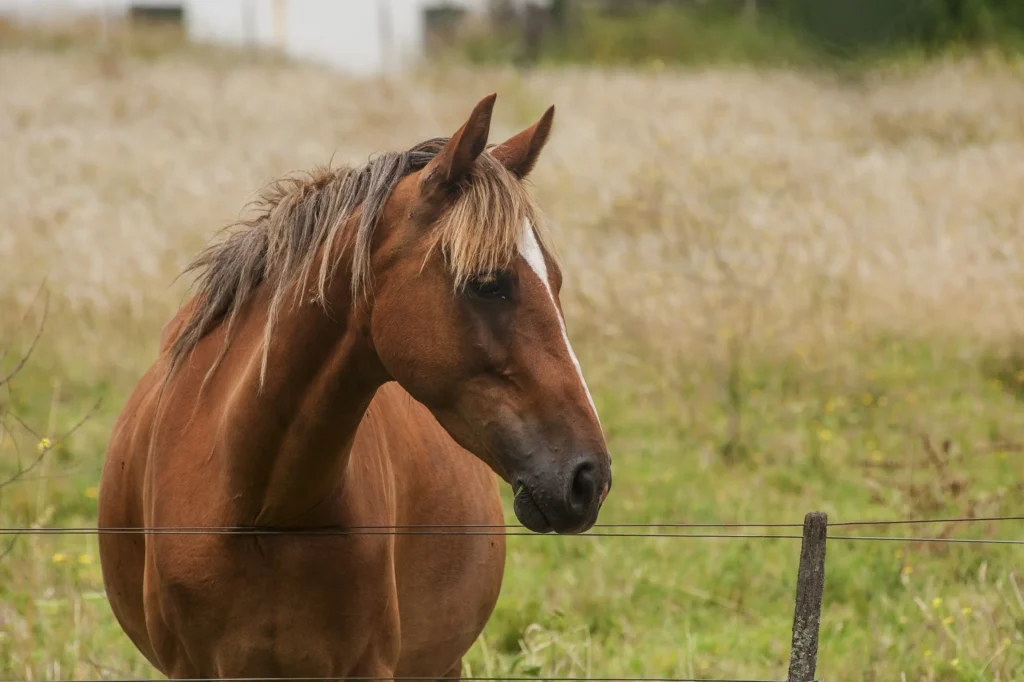
- Fast Sprinters: Quarter Horses are built for speed. They were originally bred to race short distances – especially a quarter mile. They can sprint a quarter mile faster than any other horse breed. In Quarter Horse races, you will see them take off and cross the finish line in about 20 seconds. Some Quarter Horses have even been timed at around 44 miles per hour (about 71 km/h) during these sprints. Because of this, early breeders also sometimes crossed Quarter Horses with Thoroughbreds to add even more speed.
- Many Colors: These horses come in nearly every horse color. The Quarter Horse association officially recognizes about 17 coat colors. Common colors include bay (brown with black mane and tail), black, brown, sorrel (reddish chestnut), chestnut, palomino (gold with white mane), buckskin (tan with black mane), dun, gray, and roan. For a long time, the registry only accepted solid colors, but today all colors are allowed if the foal’s parents are registered. This means you might see Quarter Horses that are palomino, gray, cremello (cream-white), or even silver dapple.
- Cow Sense: Quarter Horses have a special talent called cow sense. This is an instinct for working cattle. They can follow and react to a cow’s moves almost by magic. This was a huge advantage on ranches. Cowboys found that a Quarter Horse could block a cow or separate a calf from the herd with little direction – the horse seemed to know what to do. This innate cow sense makes Quarter Horses great for events like cutting (separating a cow) and working cow horse.
- Versatile Workers: Quarter Horses do almost everything! They are not just racehorses. You will see them in rodeos doing barrel racing, team roping, calf roping, and cutting. They also compete in reining, western pleasure, and many other Western events. In fact, any Western riding event you can name often has Quarter Horse champions. Beyond that, many Quarter Horses are trail horses and pleasure horses. They even do well in English riding classes – some compete in jumping or dressage because of their athletic ability. Their good learning ability and smooth gaits make them comfortable for many riders.
- Friendly Nature: Quarter Horses are known to have a good nature. They tend to be calm, smart, and eager to please. This makes them great horses for kids and new riders. Quarter Horses are often very patient with children and beginners. They also bond well with people. Because of this friendly character, many Quarter Horses are used in equine therapy programs, helping people with disabilities or emotional needs. Trainers often say these horses “love to work” and enjoy learning new tasks.
- Huge Registry: The American Quarter Horse Association (AQHA) is the largest horse breed registry in the world. Over six million Quarter Horses have been registered since 1940. That’s about 75,000 new Quarter Horses registered every year on average. Each time AQHA reaches a milestone, they celebrate. For example, when they reached 6,000,000 horses, the registration number 6,000,000 was auctioned off to support horsemen in need. This huge registry shows how many people raise and love Quarter Horses.
- Texas State Horse: Texas loves its Quarter Horses. In 2009, Texas made the American Quarter Horse its official state horse. This honor reflects the breed’s importance to Texas ranching and history. The famous King Ranch in Texas used Quarter Horses for generations (one of their most famous stallions was Old Sorrel). Even Texas hero Sam Houston owned a Quarter Horse named Copper Bottom. Today, Texas rodeos and horse shows often feature Quarter Horses, and you’ll see the breed on many Texas horse emblems.
- History in Every Horse: Because Quarter Horses have been bred for so long, many share common ancestors. For example, Peter McCue (born 1895) was so influential that almost every modern Quarter Horse has some of his blood. Another example is the Thoroughbred Janus (born 1746), whose lineage helped start the breed. Even today, when you look at a horse’s pedigree, it often traces back to these early horses. In 1940, when AQHA started, they chose 20 foundation stallions – these early leaders helped set the breed’s traits.
- Speed Records: Quarter Horses hold incredible speed records over short distances. For instance, a 440-yard (¼-mile) race can be won in about 20 seconds by a top Quarter Horse. In terms of speed, that is over 50 miles per hour on average. These blazing speeds are why Quarter Horses were originally bred. (As a comparison, thoroughbreds are faster over long races, but Quarter Horses beat them in a sprint.) The breed’s ability to burst quickly over a short distance is one of the coolest fun facts about Quarter Horses.
- American Pride: The Quarter Horse is often used as a symbol of American heritage. You might see it on posters, shirts, or logos celebrating the American West and cowboy culture. It is sometimes called the “American Quarter Horse” to show its place in U.S. history. On Fourth of July parades and rodeos across the country, riders often proudly show off their Quarter Horses. This breed is truly part of America’s story – fast, free, and friendly.
Random Facts You Didn’t Know About Quarter Horses
Here are some fun facts about Quarter Horses that you might not know:
- Global Popularity: Quarter Horses aren’t just an American phenomenon. After the U.S., Germany has the next most registered Quarter Horses of any country. There are about 20,000 in Germany. They’re also found in many other countries around the world. This shows the breed truly went global.
- U.S. Presidents and Celebrities: A surprising number of famous people have owned Quarter Horses. As mentioned, President Dwight Eisenhower kept two of them named Doodle De Do and Sporty Miss in the 1950s. Hollywood also had a favorite – a Quarter Horse stallion named War Paint (foaled 1945) became a movie star and even got a handprint on the Hollywood Walk of Fame. Country singer Willie Nelson has also owned champion Quarter Horses. Even today, many actors, athletes, and public figures love riding Quarter Horses.
- Wimpy – The First: We mentioned Wimpy as AQHA’s first horse. He was a sorrel stallion owned by the King Ranch. After winning first place at the Fort Worth show in 1941, he earned his place in history as the first Quarter Horse in the AQHA studbook. His descendants included many other famous show and race horses. In Texas and beyond, some still talk about Wimpy’s legacy when they meet a sorrel stallion.
- Long Lives: Quarter Horses generally live around 25 to 30 years. This is a good, long life for a horse. Some Quarter Horses with good care live even longer. For example, Old Billy, a foundation horse related to Quarter Horse bloodlines, reportedly lived to 62 years old (though he was actually a donkey). Regardless, when you choose a Quarter Horse as a companion, you might share your life with it for a generation.
- Museum and Hall of Fame: There is an American Quarter Horse Hall of Fame and Museum in Amarillo, Texas. Here you can learn about famous horses and people in Quarter Horse history. They have trophies, saddles, and pictures of champions. It’s a fun place to visit if you love horses and want to see Quarter Horse memorabilia. Each year they induct great horses and riders into the Hall of Fame.
- Colors of the Herd: According to AQHA records, the most common color in registered Quarter Horses is sorrel (a reddish brown)static1.1.sqspcdn.com, followed by chestnut. In the past, only 13 coat colors were accepted, but modern genetics let breeders add even more. Today, colors like cremello, perlino, and smoky cream are accepted. So the next time you see a golden palomino Quarter Horse or a white-gray roan, you’ll know that AQHA’s rules allow it.
- White Markings: While bold spotted patterns are uncommon, most Quarter Horses have at least a little white. Typical markings are a star or stripe on the face, and white socks on one or more legs. Breeders used to avoid big white patches in the registry, but today it’s more accepted. These little white blazes and stockings are just part of the breed’s charm.
- Seeing All Around: Like all horses, Quarter Horses have large eyes on the sides of their head. This gives them nearly 350 degrees of vision – they can see almost all around themselves. The only blind spot is right in front of their nose and right behind their tail. This wide vision helps protect them from predators. Quarter Horses often use it when they watch cattle on the ranch or guard their herd.
- Standing Sleep: One fun fact about horses: they can doze while standing up, and Quarter Horses are no exception. They have a special stay apparatus (a ligament system) in their legs that lets them lock one hind leg and relax standing. This way, they can rest without lying down (since a very large animal lying for too long could be uncomfortable). You might see a Quarter Horse nod off while standing after a long day on the trail.
American Quarter Horse Facts You Should Know
- Named for a Quarter Mile: The Quarter Horse earned its name because it could sprint a quarter-mile (about 400 meters) faster than other breeds. This amazing short-distance speed is why early Americans loved it.
- Sturdy Build: These horses often stand about 14–16 hands high and weigh around 900–1200 pounds. They have strong legs and very powerful hindquarters, which help them stop quickly and run fast.
- Calm Nature: Quarter Horses are known for being gentle and level-headed. They are intelligent and eager to learn. This makes them great partners for families and beginners.
- Huge Numbers: Over six million Quarter Horses have been registered in AQHA’s studbook. This makes them the most numerous horse breed in the world. (By comparison, most other breeds have registrations in the hundreds of thousands or less.)
- Versatility: Quarter Horses can do it all: they work on ranches, compete in rodeos, race on the track, and go on pleasure rides. Whether running barrels, cutting cattle, or even jumping fences, they can excel. They are celebrated for fitting both rugged work and fun competitions.
- Good for All Ages: Quarter Horses are very forgiving and patient. They rarely bolt or buck. Trainers say they “come when called” more than other breeds. This is why they are so popular with youth horse clubs (4-H) and pony clubs – kids love riding them.
- Cowboy’s Horse: Because of their cow sense and bravery, the Quarter Horse is often thought of as the cowboy’s partner. It’s the horse you picture when you think of cattle drives or rodeos.
- Easy to Train: Quarter Horses learn quickly. Many trainers say a Quarter Horse will learn a new task faster than most. Whether it’s a sliding stop in reining or a tight turn in barrel racing, Quarter Horses pick it up with practice.
- USA Symbol: The Quarter Horse helped settle the American West. It ran on the Oregon Trail, carried riders on cattle drives, and even served in wars. It’s a true symbol of American equestrian heritage.
- Horse Trivia: Quarter Horses love treats like carrots and apples just like other horses. They also enjoy a sturdy winter blanket (turnout sheet) when the weather is cold. These aren’t special facts, but they show how these horses live comfortably with people.
- Ask Questions: If someone asks you about Quarter Horses, you now have plenty of answers. You can say they are America’s horses, beloved for speed, smarts, and kindness. They are a horse for everyone.
Frequently Asked Questions
Q1: What is a Quarter Horse?
A: A Quarter Horse is a special kind of horse known for running very fast in short races, like a quarter mile. That’s why it’s called a “Quarter” Horse.
Q2: Are Quarter Horses good for beginners?
A: Yes! Quarter Horses are calm, smart, and easy to train. They are great for people who are learning to ride.
Q3: What colors can Quarter Horses be?
A: Quarter Horses come in many colors like brown, black, red (called sorrel), golden (called palomino), and more.
Q4: What jobs do Quarter Horses do?
A: Quarter Horses are very versatile. They work on farms, compete in rodeos, go on trail rides, and even do jumping and dressage.
Q4: How much does a American quarter horse weigh?
A: An American Quarter Horse typically weighs between 950 and 1,200 pounds (about 431 to 544 kilograms). Their weight can vary depending on factors like age, diet, and activity level. These horses are known for their strong, muscular build, which helps them excel in activities like racing, working on farms, and riding.
We hope you enjoyed these fun facts about Quarter Horses. Quarter Horses are fast, friendly, and have an amazing history. They have raced in short sprints, worked on ranches, and starred in rodeos and shows. Now you know more about why Quarter Horses are loved by so many. For more horse fun and facts, visit I Heart Horses. If you enjoyed these fun facts about Quarter Horses, tell a friend or check I Heart Horses for more. Enjoy!
